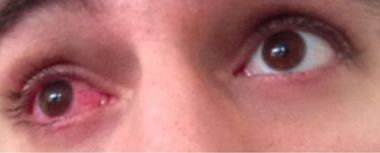Digital Eye Fatigue
Eye doctors have started noticing a new group of symptoms associated with the use of phones, tablets, computers, and other digital devices. This new condition is now known as Digital Eye Fatigue (DEF), Digital Eye Strain (DES), or Computer Vision Syndrome (CVS). The American Optometric Academy describes DEF as "the complex of eye and vision problems related to near work which are experienced during or related to computer use."
The symptoms of DEF include irritated eyes, dry eyes, the eyes feeling tired, eye strain, burning eyes, light sensitivity, fluctuating vision, and trouble adjusting from viewing near to far distances (to name a few).
DEF is something eye doctors see on a daily basis due to the more regular use of digital devices. A study showed 90% of workers who use computers for more than 3 hours in a day experienced Digital Eye Fatigue.
The other factor in Digital Eye Fatigue outside of computers and laptops, is the use of smartphones. Cellphone use has increased dramatically as more functions have been added to their capabilities so that cellphones are truly portable computers. Now almost everyone has a smartphone.
Screen time on digital devices has increased dramatically since people use both computers and smartphones on a regular basis. Studies show that smartphone users check their phones on average 150 times per day!
Although the backlight of these devices includes all different colors (wavelengths), with most devices the main wavelength utilized for the backlights on digital devices is of the blue wavelength spectrum. Blue wavelengths of light are more susceptible to scattering. This is why the sky is blue, because of something called Rayleigh’s Phenomenon in which the blue wavelengths hit light particles in the atmosphere and scatter so that they become more apparent. When light scatters in the eye it can lead to eye fatigue and glare because it disrupts the normal visual processing functions.
The symptoms of Digital Eye Fatigue can be broken down into two main categories: Binocular Vision Fatigue and Dry Eye Syndrome.
Binocular Vision Fatigue relates to the tiring and wearing out of the muscles that keep our eyes aligned and properly focused to see clear, single images. The symptoms include tired eyes, eye strain, difficulty changing the distance of focus, double vision, heavy-feeling eyes, and blurry vision. There are eye disorders that can cause similar symptoms to DEF including strabismus (eye turns), convergence insufficiency (limited ability to turn the eyes inwards), accommodative insufficiency (reduced ability to focus the eyes), oculomotor dysfunction (trouble with eye movements), and many others. However, DEF can cause these symptoms even in a patient that has no history of these disorders and their eyes are aligned, focus properly, and make normal eye movements. Patients can even have up-to-date glasses and perform perfectly when we test their Binocular Vision system, but due to the high stress of computer work the visual system can become fatigued. Eye doctors have to first rule out other eye problems before we can attribute these symptoms to Digital Eye Fatigue.
DEF causes Binocular Vision symptoms due to overworking the eye muscles that focus the eyes, locking the muscles that turn the eyes inwards for near viewing too long, and because of the high visual demand of computer work looking at small letters and subtle changes in contrast. Even small changes in glasses prescriptions (refractive error) that normally would not cause symptoms can be exacerbated at these times.
Symptoms of dry eyes, irritated eyes, red eyes, watering eyes, itching and burning eyes, and even contact lens discomfort can be associated with DEF as well. This stems from the fact that we don't blink as much when doing near work. When a person blinks, the eyelids spread new layers of tears across the eyes. Studies show patients should blink 20-22 times a minute, but when doing near computer work we blink only 5-7 times per minute. With reduces blinking comes less tears placed on the eyes. Without a fresh coat of tears at regular intervals, the eyes can dry out and cause symptoms.
Do your eyes feel dry or tired when looking at a computer or other digital device too long? Come have a Digital Eye Fatigue evaluation at Sea Eye Care. During the exam we will check your eye muscle function, evaluate your focusing system, check your glasses prescription, and look for evidence of Dry Eye Syndrome. After the information gathered during the evaluation, we can determine a proper treatment based on the findings. Treatment of DEF can include ergonomic recommendations for monitor placement and backlight settings, glasses made for you to wear solely at the computer, a change in lens material and or anti-reflective coating, tint recommendations like amber or blue-blocking designs, intervals to take breaks and rest the eyes, eye exercises, and different levels of dry eye therapy based on what we see.








